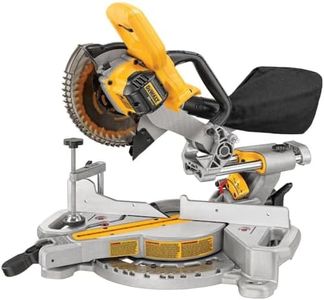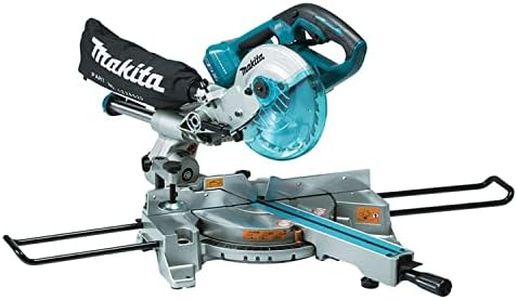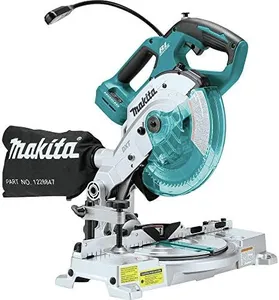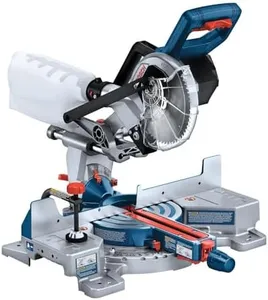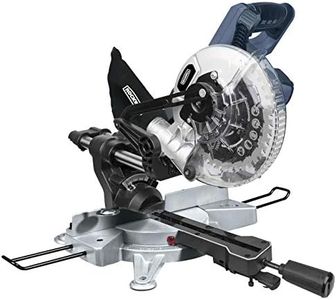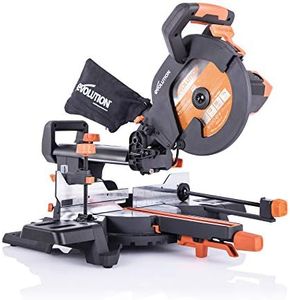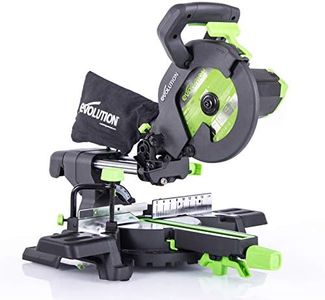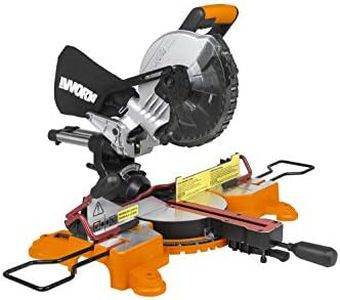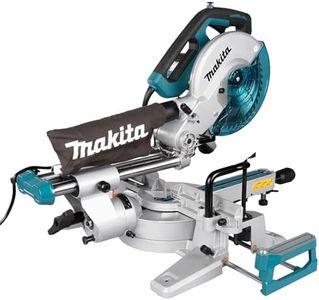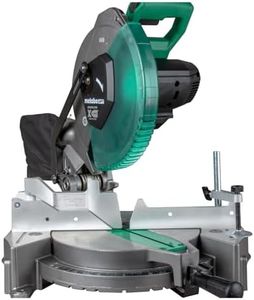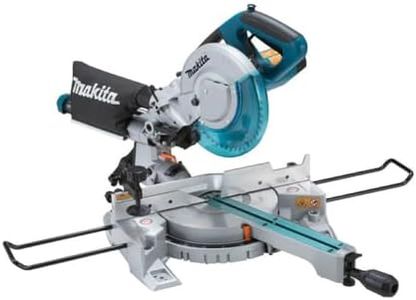We Use CookiesWe use cookies to enhance the security, performance,
functionality and for analytical and promotional activities. By continuing to browse this site you
are agreeing to our privacy policy
10 Best Sliding Miter Saws
From leading brands and best sellers available on the web.Buying Guide for the Best Sliding Miter Saws
Choosing the right sliding miter saw can make woodworking, DIY projects, or even occasional home repairs much easier and more accurate. Understanding the features that really matter will help you select a saw that matches the kind of projects you plan to do, the space you have available, and the level of convenience and precision you want. When evaluating sliding miter saws, focus on the main specifications and how they relate to your intended use. The right balance of size, cutting capacity, and useful features is key to getting the best fit for your needs.Blade SizeBlade size refers to the diameter of the saw's circular blade, typically measured in inches. The most common sizes are 7-1/4", 10", and 12" blades. Blade size determines how deep and wide a saw can cut in a single pass. Smaller blades are lighter and better for easy handling and smaller trim work, while larger blades are better for cutting through thicker or wider materials. If you mostly do small molding or picture frames, a smaller blade is usually enough, but for flooring, framing lumber, or large baseboards, a bigger blade will be more versatile.
Sliding vs. Non-SlidingSliding miter saws have rails that allow the saw head to move forward and backward, increasing the length of the cut they can make. Non-sliding models are fixed, so they have a more limited cut. The sliding feature is important when you need to cut wider boards in a single pass. If you often cut material wider than 6 inches, a sliding saw is a better choice. For mostly small cuts and light-duty work, non-sliding is simpler and lighter to handle.
Cutting CapacityCutting capacity refers to the maximum width and thickness of material the saw can cut at different angles like straight (90-degrees) or mitered (45-degrees). This is key for matching the saw to your typical work, such as crown molding, baseboards, or deck planks. Carefully check both the crosscut (width) and vertical (thickness) capacities to ensure they're suitable for your largest expected projects. More capacity gives flexibility, but a high-capacity saw can be bulkier.
Bevel RangeThe bevel range tells you the angles at which the saw head tilts to make angled cuts through the thickness of material for tasks like crown molding. Some saws tilt only one way (single bevel); others tilt both left and right (dual bevel). Dual bevel saws save time and effort if you do lots of complex trim work or want fewer awkward workpiece flips. For simple or infrequent bevel cuts, a single bevel might be enough.
Miter RangeMiter range describes how far the saw can pivot left and right along its base for angled crosscuts, often marked in degrees. Standard saws usually go 0 to 45 degrees either side, but some may go a bit further. A wider miter range is helpful for cutting odd angles and especially useful in custom carpentry, complex frames, or unique corners. For standard framing or trim, the common ranges are usually sufficient.
Laser Guide and Dust CollectionMany sliding miter saws now include laser guide systems to show exactly where the blade will cut, and dust collection features to keep your workspace cleaner. A precise laser makes lining up cuts faster and more accurate, while a good dust collection system reduces mess and can improve sight lines and air quality. If you value speed or typically work indoors or in shared spaces, these features can make a difference. If you usually work outdoors or don’t mind some sweeping, you might not need to prioritize them.
Portability and WeightPortability describes how easy it is to move and store the saw. Sliding miter saws can be heavier due to their rails and larger motors. If you plan to move your saw between job sites or have limited storage, lighter models or convenient built-in carry handles might matter more. For a workshop where the saw stays put, weight isn’t as critical.
